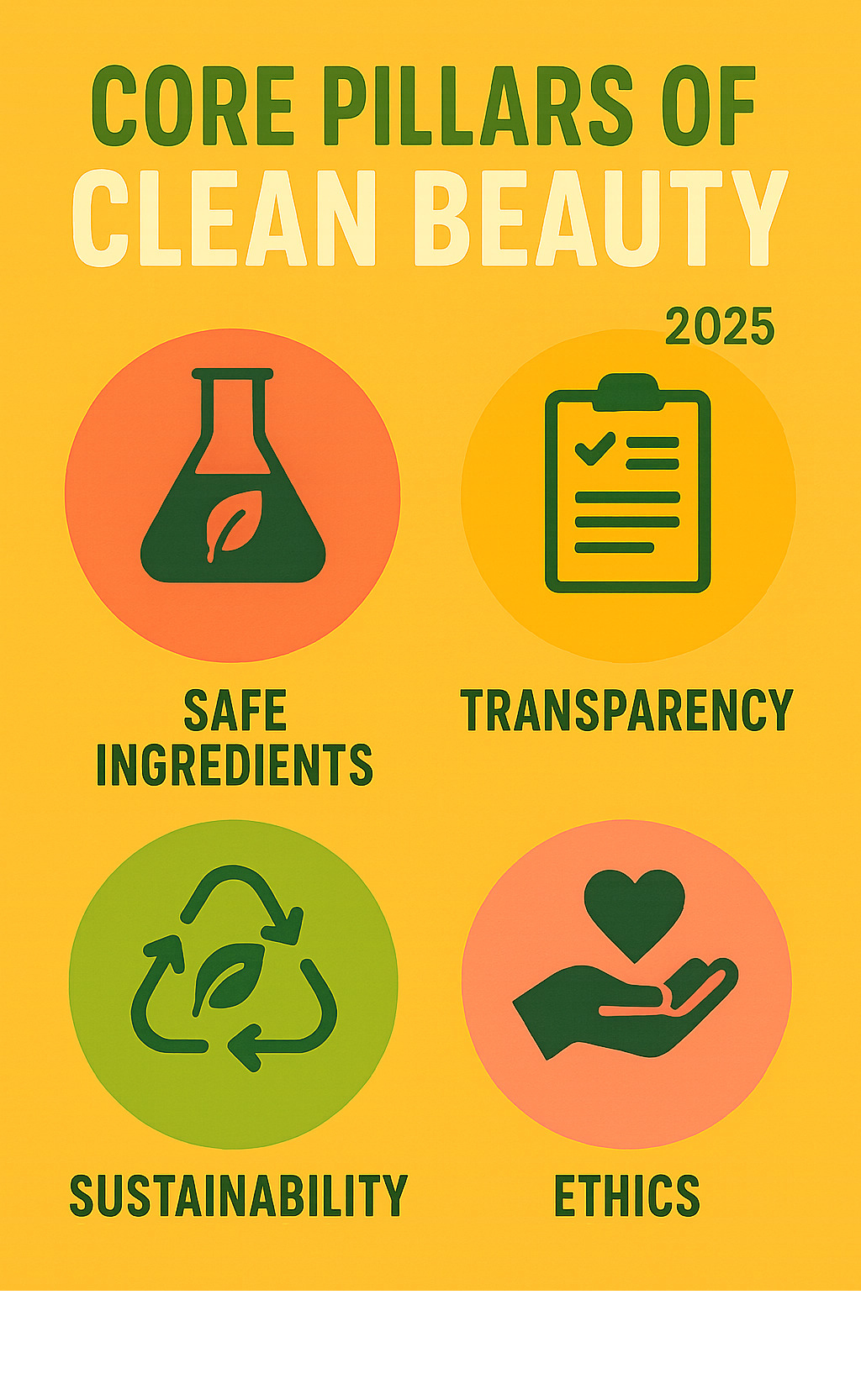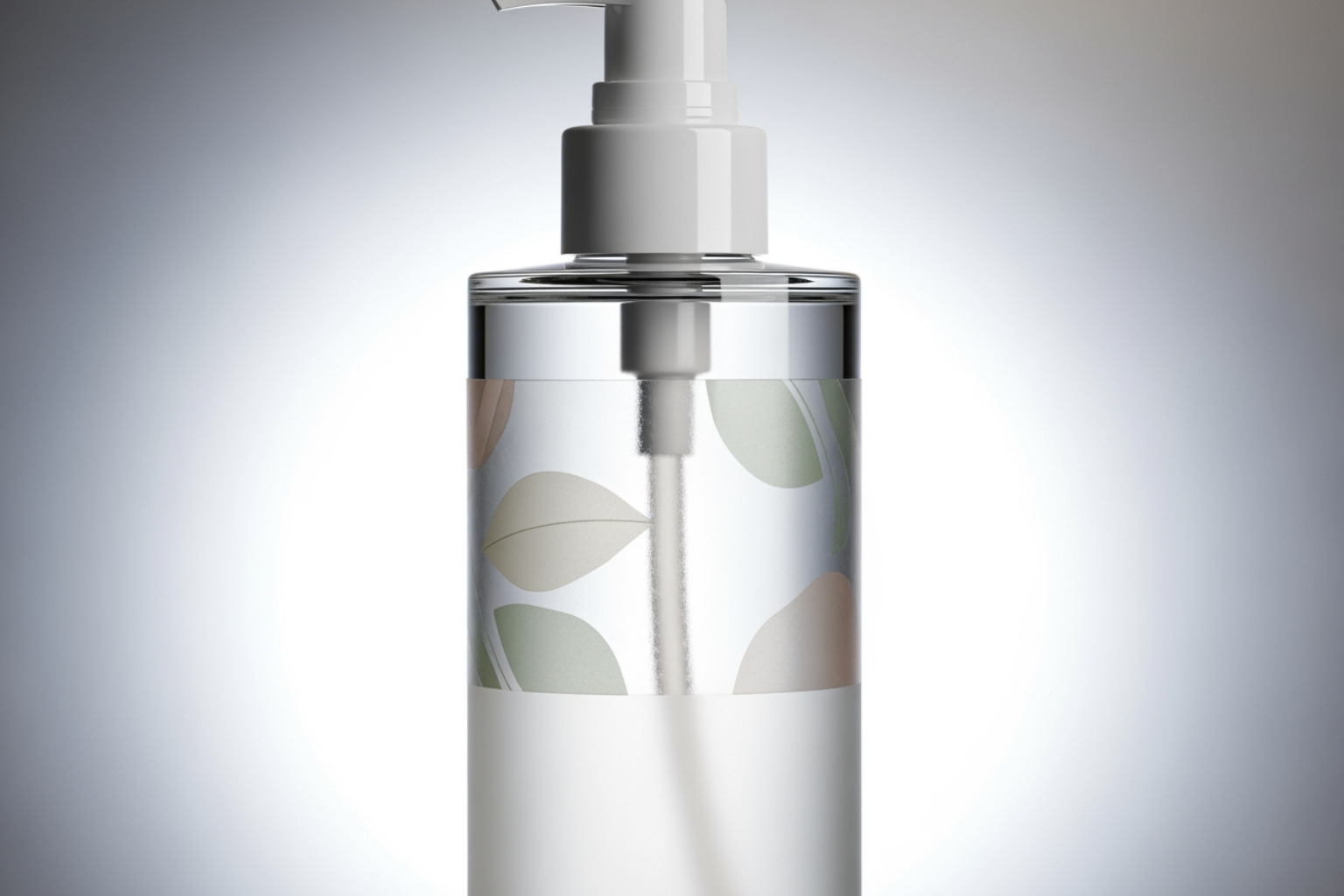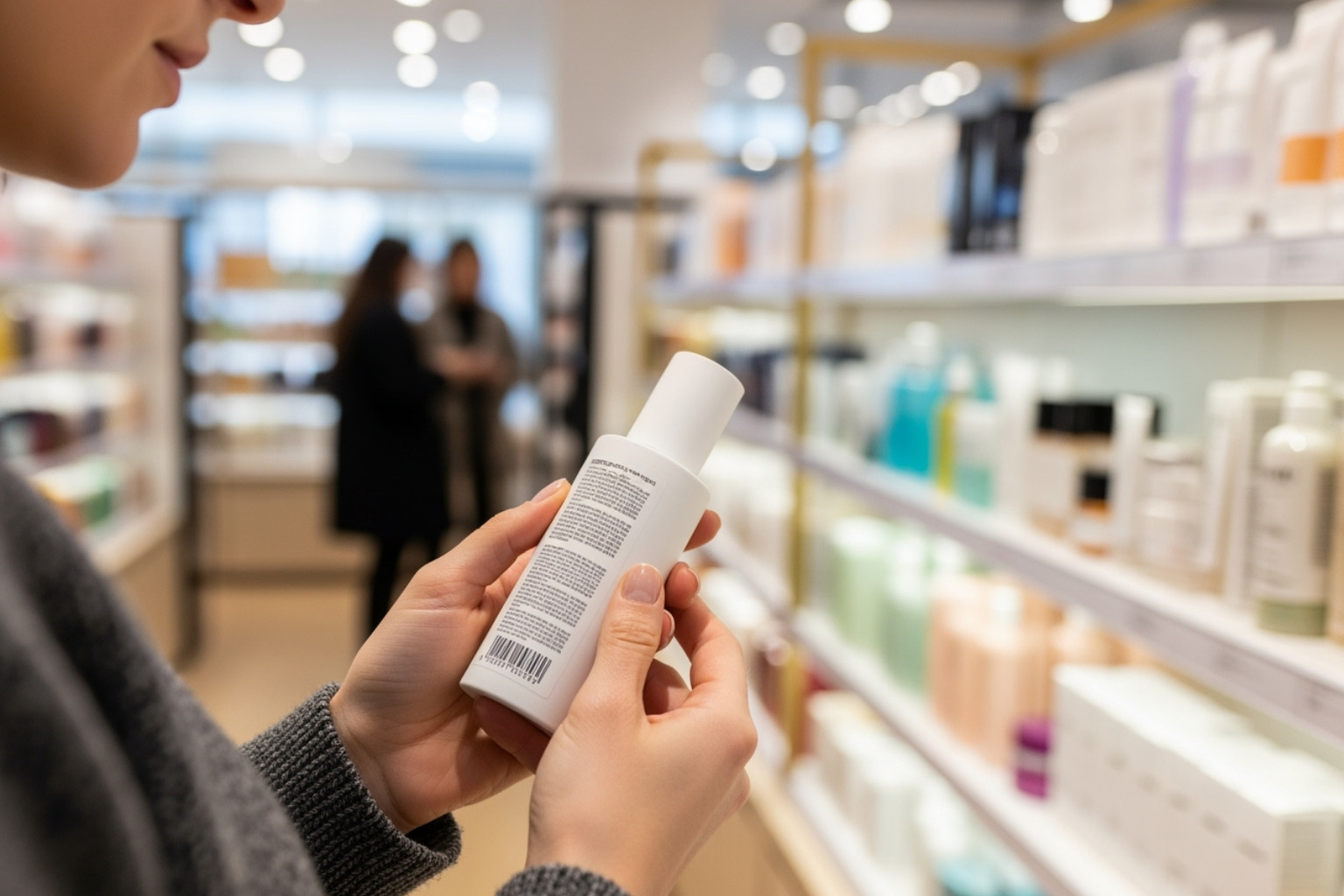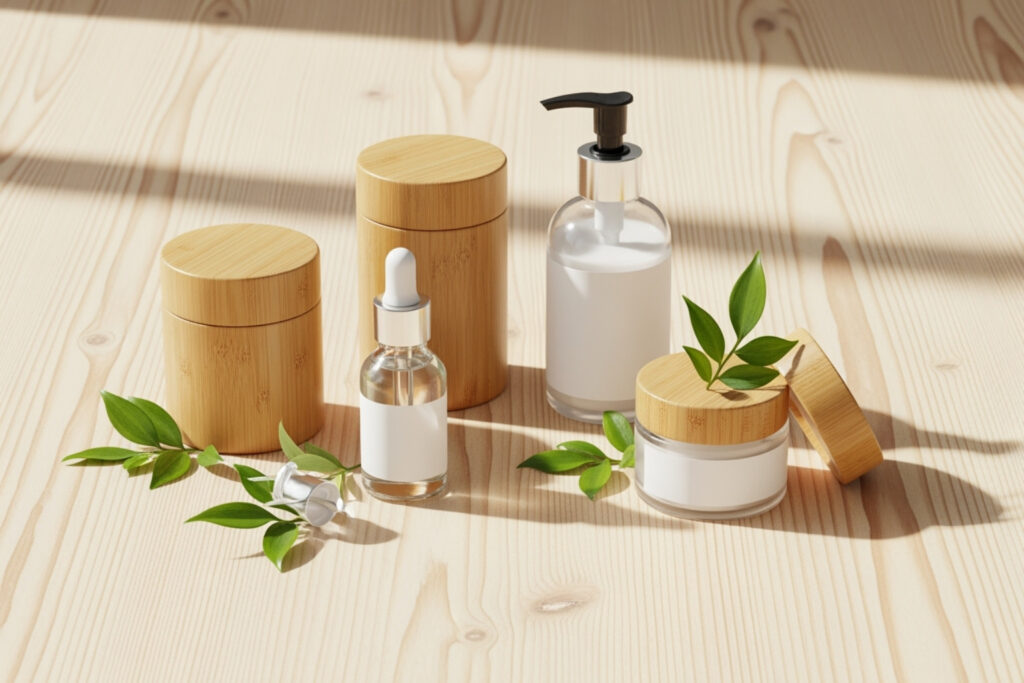Understanding the Clean Beauty Revolution
The clean beauty revolution is changing the beauty world. It’s more than just a trend. Many see it as a deep, conscious shift that started years ago.
So, what is clean beauty?
- It means products made with ingredients safe for you and the planet.
- It’s about being clear and open (transparent) about ingredients and where they come from.
- It means using ethical practices in how products are made and sold.
- It focuses on being good for the environment (sustainability).
This movement is gaining speed. It’s about choosing products that support your well-being and a healthier planet. It’s about knowing what you put on your skin.

Clean beauty revolution terms made easy:
What is “Clean Beauty”? Explaining the Movement
Have you ever wondered what “clean beauty” truly means? It’s a term we hear a lot, and while it doesn’t have one official, universally agreed-upon definition (yet!), at Beyond Beauty Lab, we understand it as a thoughtful way to approach your personal care. Think of it as choosing products made without ingredients known or suspected to be harmful to your health or our beautiful planet. This includes a growing list of things like parabens, sulfates, phthalates, synthetic fragrances, and other iffy additives.
The idea behind clean beauty is simple: what we put on our bodies is just as important as what we put in them. It’s not just about avoiding the “bad stuff” either; it’s also about choosing beneficial, safe, and ethically sourced ingredients. This whole movement has grown so much because people like you are asking for more transparency and safety in their daily routines.

We believe that being informed is the very first step toward a cleaner, greener beauty routine. For a deeper dive into specific terms you might encounter, be sure to check out our Ingredient Glossary: Clean Beauty Terms You Should Know.
The Core Principles of Clean Formulations
At the very heart of the clean beauty revolution are some guiding principles that set it apart from traditional beauty. These aren’t just buzzwords; they’re commitments to a better way of doing things.
First up is Ingredient Transparency, and it’s super important. Clean beauty brands aim to be totally open about every single ingredient in their products, often giving you detailed lists and clear explanations. This means you can make informed choices, knowing exactly what you’re putting on your skin. It’s all about building trust, and we believe you deserve straightforward information about what goes into your products.
Next, we have Ethical Sourcing. This goes beyond just the ingredients themselves. It means making sure that raw materials are harvested responsibly, with minimal impact on the environment, and that everyone involved in the process is treated fairly. Many brands prioritize botanicals, extracts, and minerals that are produced sustainably, ensuring their entire supply chain is as “clean” as their formulas.
Then there’s Sustainable Packaging. The commitment to our planet doesn’t stop with the ingredients inside the bottle! Clean beauty accepts eco-friendly packaging, choosing materials that can be recycled, are biodegradable, or can be refilled to cut down on waste. This often includes innovative materials like sugarcane-derived bioplastic, recycled plastics (PCR), and FSC-certified cartons.
And finally, a cornerstone of ethical clean beauty is a Cruelty-Free Commitment. This means absolutely no animal testing at any point in the product’s development. Many brands proudly carry certifications from organizations like PETA, showing their dedication to compassion and animal welfare. We wholeheartedly believe in Ethical Vegan Skincare that respects all living beings.
These principles work together to create products that are not only effective for you but also kind to your conscience and the world around us.
How “Clean” Evolved from Niche to Mainstream
The journey of clean beauty, from a tiny, niche idea to a major force in the market, has been truly amazing. It all started with health-conscious individuals and small, independent brands-often found in health food stores. But what began as a whisper has now become a powerful, mainstream roar!
Driven by people like you becoming more aware and demanding safer, more transparent options, the clean beauty revolution really picked up speed. Consumers started looking closely at labels, asking tough questions, and actively seeking alternatives to traditional products. This big shift in consumer behavior got the attention of major retailers. Now, big names like Sephora, Ulta, and Target have their own “clean” standards and dedicated sections, making these products easier to find than ever before.
The market growth numbers tell an incredible story: the global clean beauty market is predicted to reach a whopping $22 billion by 2024! This isn’t just some fleeting trend; it’s a fundamental change in how we think about beauty. In fact, clean and sustainable products have been growing much faster than the overall beauty industry for the past four years. The “clean” customer segment, which currently makes up about 24% of U.S. adults, is expanding rapidly and is expected to become the new normal. This proves that this revolution isn’t just here to stay – it’s just getting started!
The Driving Forces Behind the Clean Beauty Revolution
The clean beauty revolution wasn’t just a sudden burst of innovation; it’s a powerful wave that has been building for years. It’s a direct response to a growing awareness that beauty products shouldn’t compromise our well-being or the health of our amazing planet. We’re all waking up to the idea that what we put on our bodies matters just as much as what we put in them.

Rising Health Consciousness
Have you ever stopped to think about how many beauty products you use every single day? For many of us, it’s a surprising number, and all those products mean a lot of chemical exposure that adds up over time. It’s a bit like a silent accumulation, and it’s one of the biggest reasons the clean beauty movement took off!
For decades, certain ingredients were just part of the beauty routine, even though questions about their safety were starting to emerge. Take parabens, for instance. Used as preservatives since the 1920s, they’re now widely avoided because of concerns about them acting as endocrine disruptors. Other common culprits like phthalates and sulfates are also on the “no-go” list for many conscious consumers. Even substances like lead, a known toxicant, have been found in cosmetics, sparking even more concern and a demand for safer options.
This growing health consciousness, fueled by easily accessible information, has truly empowered consumers. We’re all asking more questions and demanding better. At Beyond Beauty Lab, we believe in empowering you with knowledge. That’s why we share valuable resources like insights from Toxic Beauty – Harvard Health and explorations into The Connection Between Gut Health and Glowing Skin.
Environmental and Ethical Awakening
But the clean beauty revolution isn’t just about what’s good for us; it’s also deeply rooted in a profound awakening to what’s good for the planet and its inhabitants. We’re all becoming more aware of how our everyday choices impact the world around us, and the beauty industry is no exception.
One huge concern is plastic pollution. Imagine this: the global cosmetics industry churns out a staggering 120 billion units of packaging annually, and much of it isn’t recyclable. That’s a mountain of plastic waste! This reality has boostd the zero-waste movement within beauty. People are actively seeking plastic-free options, with online searches for “plastic-free” skyrocketing by nearly 900% in a single year! Brands are listening, offering innovative solutions like refillable containers, using recycled materials, and even exploring compostable packaging.
Beyond waste, this revolution also accepts ethical sourcing. This means ensuring that ingredients are obtained without exploiting people or harming delicate ecosystems. There’s a strong push for fair trade practices that truly benefit the communities involved in producing these precious ingredients. And then there’s animal welfare. A firm commitment to cruelty-free practices is a cornerstone, with a massive increase in vegan product launches (up 175% between 2013 and 2018!). We’re proud to support brands that are PETA-certified and dedicated to expanding their vegan offerings.
This dual focus on protecting our environment and acting ethically means the clean beauty revolution is about more than just what’s not in your product. It’s about how it’s made, how it’s packaged, and its overall footprint on our beautiful world. You can learn even more about aligning your routine with your values by exploring Cruelty-Free Beauty Products and Sustainable Beauty Products.
Navigating the Clean Beauty Landscape: Labels, Laws, and Lists
Stepping into the clean beauty revolution can feel overwhelming at first. With so many different terms, claims, and marketing messages, it’s like trying to decode a secret language. The truth is, there’s no universal rulebook for what “clean” means, and regulations vary dramatically from country to country.
But here’s the good news: once you understand the basics, you’ll feel much more confident making choices that align with your values. Think of it as learning to be a beauty detective – and we’re here to give you all the tools you need.
The key is learning to look beyond the pretty packaging and bold claims on the front of products. Our comprehensive guide on Beyond the Label: How to Read Clean Beauty Ingredients Like a Pro will teach you exactly what to look for when you flip that bottle around.
Clean vs. Green vs. Natural: Understanding the Terms
One of the biggest sources of confusion in the clean beauty revolution is the jumble of terms that sound similar but mean very different things. You’ve probably seen products labeled as “clean,” “green,” “natural,” or “organic” – sometimes all on the same package! Let’s clear this up once and for all.
| Term | Definition | Focus | Common Misconceptions |
|---|---|---|---|
| Clean | Products formulated without ingredients known or suspected to be harmful to human health or the environment | Safety and non-toxicity; can include safe synthetic ingredients | That it means “all-natural” or chemical-free |
| Green | Products designed with environmental sustainability in mind | Eco-friendly packaging, sustainable sourcing, reduced environmental impact | That it automatically means safer for your skin |
| Natural | Products made primarily from ingredients derived from nature | Plant-based, mineral, or naturally-occurring ingredients | That natural always equals safe (poison ivy is natural too!) |
| Organic | Products containing ingredients grown without synthetic pesticides, fertilizers, or GMOs | Agricultural practices and ingredient purity | That organic certification guarantees the product is clean or effective |
Understanding these distinctions helps you choose products that match your specific priorities. Maybe you’re most concerned about ingredient safety (clean), environmental impact (green), or ingredient origin (natural/organic). There’s no right or wrong choice – it’s about what matters most to you.
The Stark Contrast in Global Regulations
Here’s something that might surprise you: the regulatory landscape for cosmetics varies dramatically depending on where you live. This difference has a huge impact on the clean beauty revolution and what products are available to you.
In the United States, the FDA regulations for cosmetics are surprisingly limited. The agency doesn’t require pre-market approval for most cosmetic products, and companies are largely responsible for ensuring their own product safety. This hands-off approach means many ingredients that are banned elsewhere remain perfectly legal in American beauty products.
Compare this to European Union standards, which are much stricter. The EU has banned or restricted over 1,600 ingredients in cosmetics, while the US has only banned or restricted about 30. That’s a staggering difference! Ingredients like certain parabens, formaldehyde-releasing preservatives, and specific UV filters that you might find in US products are completely off-limits in Europe.
The good news is that change is coming. The Modernization of Cosmetics Regulation Act of 2022 gives the FDA more authority to regulate cosmetics, including the power to recall dangerous products and require companies to report serious adverse events. It’s a step in the right direction, though we still have a long way to go to match European standards.
For a complete list of what’s currently prohibited in the US, check out the FDA Prohibited & Restricted Ingredients database.
The Rise of Restricted Substance Lists (RSLs)
Since government regulation has been slow to catch up with consumer concerns, many beauty brands have taken matters into their own hands. This is where Restricted Substance Lists come in – and they’re becoming a powerful force in the clean beauty revolution.
Think of RSLs as a brand’s personal “no-fly list” for ingredients. These are comprehensive lists of substances that companies commit to never using in their formulations, often going far beyond what’s required by law. Some brands restrict hundreds or even thousands of ingredients, creating their own high safety standards.
This industry initiative represents a form of brand accountability that puts consumer safety first. When a company publishes their RSL, they’re making a public commitment that you can hold them to. It’s transparency in action.
Many of these lists target ingredients that are controversial or potentially harmful, like parabens, sulfates, phthalates, synthetic fragrances, and formaldehyde-releasing preservatives. Some brands go even further, excluding ingredients that might be safe but don’t align with their clean philosophy.
The beauty of RSLs is that they make shopping easier for you. Instead of memorizing hundreds of ingredient names to avoid, you can simply choose brands whose ingredient safety standards align with your comfort level. For more detailed information about specific ingredients and what to look for, our Ingredient Safety Standards guide is an invaluable resource.
This self-regulation by brands shows how consumer demand is driving real change in the beauty industry. When we vote with our wallets, companies listen – and that’s the true power of the clean beauty revolution.







